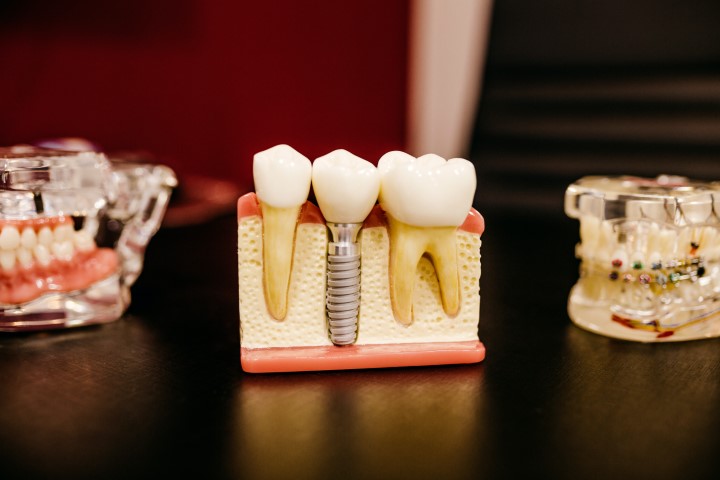
Understand Tooth Implant
We will begin with explaining how a dental implant functions, so what exactly are dental implants are a different way of replacing lost teeth as they are fixed in your jaw bone, so they function more like natural tooth implants can be used to replace a single teeth, they can replace several teeth to hold a fixed bridge.
Before deciding on dental implant treatment, we will complete a medical and dental evaluation and develop a plan. We will make sure you do not have any health conditions that could make surgery inadvisable. In addition, we will use several different diagnostic tools such as ct scans or dental x-rays so your implants can be placed with precision and with minimal risk. The process for having dental implants involves two separate surgical procedures:
The initial surgery is to place the implant post in the jaw bone and is usually carried under a local anaesthetic. An incision is made in the gum tissue before a hole is precisely created, the implant is placed into the hole. The gum is stitched shut and the site is left to heal so the implant pose can integrate firmly with the jawbone. During this process, new bone cells will grow on and around the implant post, ensuring it cannot move and that it is strong enough to support restoration to assist healing dental appliances should not be worn for the first few days after surgery as it is essential not to put pressure on the implant site and try to avoid placing pressure on the implant.
The second surgical procedure will begin in three or eight months later, at which stage the implant will be exposed and evaluated. We need to determine if the implant post has successfully locked into your jawbone. At this point, it may be necessary to make some changes. If the implant has failed to lock in, then we will have it removed. Options at this stage can include changing the implants or placing the implant at a different area if the implant post has been successful. Then, the second surgical procedure is to create an opening in the gum to expose the implant and place a post known as a healing cap so a tooth can be attached that will extend above the gum line into the mouth. The cap is used to shape the gum tissue to give support to the crown or bridge.
The final phase is to thread a metal sleeve known as an abutment into the implant, and this will be used to hold the crown bridge or denture firmly in position. At this stage, your final prosthesis can be constructed the fee for the final teeth is usually separate from the surgical fees as we mentioned earlier, there is always some risk with any type of surgery the risks associated with dental implants can be in the surgery or the tooth restoration surgical risks can include bleeding infection, swelling, pain, temporary facial bruising following surgery more severe but rare problems are bone fracturing in areas where the jaw is thin muscle spasms injuries to the temporomandibular joint damage to tooth roots which may later need root canal treatments or need to be removed nerve damage at the surgical site is usually relatively close to a sensory nerve.
This is mainly in the lower jaw. The damage can cause numbness, pain or a tingling sensation in the lips, chin and tongue. This numbness is usually temporary, but occasionally it may be permanent in the upper jaw, sinus or nasal perforation during implant surgery. Sinus infection complications are usually resolved when treated appropriately and they can be treated at the office with medications or procedures during the surgery or at home with medications such as pain medication to reduce pain, antibiotics to avoid or treat infection steroids to avoid inflammation.
Sometimes it might be necessary to carry out additional surgery to repair the problem. Surgery is thoroughly planned, but sometimes the actual procedure may reveal that implant surgery is not possible.
Different dental solution is needed each person heals differently, so it is not possible to precisely predict the result of implant surgery, making sure you understand these risks
We want you to understand surgery risk and make the right decision. If you don’t understand, ask for more explanations, do not agree to have treatment before you understand and agree with the potential risks of tooth restoration risks.
The long-term success of dental implants relies on good oral hygiene. It is essential to regularly brush and floss the implants and return to us for checkups and cleanings. Most importantly, please make an appointment with us to examine the tooth condition.


